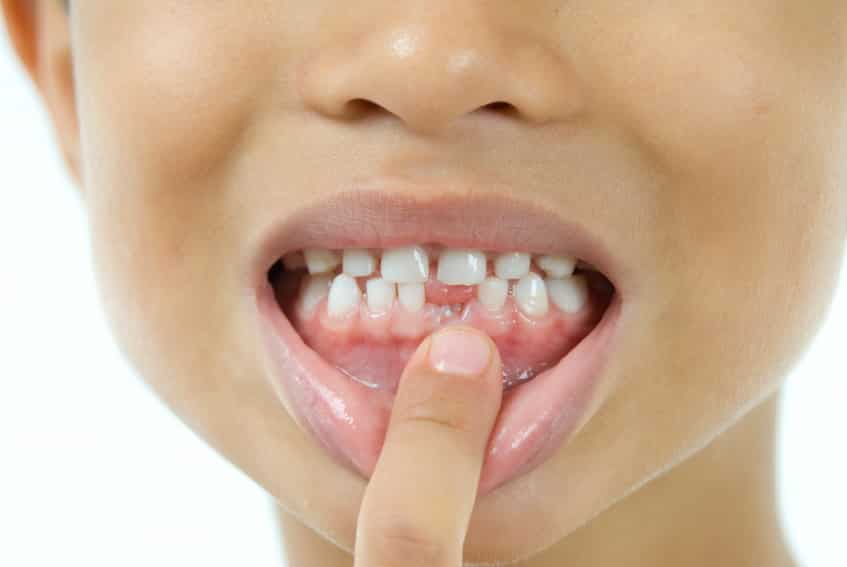
When it comes to loose teeth, many children and even adults experience the anticipation and anxiety surrounding the idea of pulling out a tooth. While there are various methods to remove a loose tooth, using dental floss is a safe and effective technique that can minimize discomfort and ensure a smooth tooth extraction process. In this article, we will provide you with a step-by-step guide on how to pull out a loose tooth with dental floss, along with tips, precautions, and frequently asked questions to address any concerns you may have.
How to Pull Out a Loose Tooth with Dental Floss
Tooth extraction can be a nerve-wracking experience, but with the right approach, it can be a simple and painless procedure. Here’s a step-by-step guide on how to pull out a loose tooth with dental floss:
1. Gather the necessary supplies
Before attempting to extract a loose tooth, make sure you have the following supplies ready:
- Dental floss: Choose a waxed dental floss for better grip and ease of use.
- Clean hands: Wash your hands thoroughly to maintain proper hygiene.
- Tissues: Have tissues nearby to wipe away any blood after the tooth extraction.
2. Encourage the tooth to loosen
If the tooth isn’t already loose enough, gently wiggle it back and forth with your clean fingers or tongue. This movement helps loosen the tooth and prepares it for extraction.
3. Prepare the dental floss
Take a piece of dental floss, approximately 18 inches long, and tie a knot in the middle to create a loop. This loop will serve as a lasso to securely grip the loose tooth.
4. Position the dental floss
Carefully slide the loop of the dental floss over the tooth that needs to be extracted. Ensure the loop is placed as close to the base of the tooth as possible without causing discomfort.
5. Securely grip the tooth
Hold both ends of the dental floss firmly and pull them in opposite directions, creating tension around the tooth. The loop will tighten around the tooth, providing a secure grip for extraction.
6. Pull the tooth gently
With a steady, gentle motion, pull the dental floss away from the tooth. Use a slight twisting motion if necessary to help loosen the tooth further. Be patient and avoid applying excessive force to prevent any unnecessary pain or injury.
7. Clean the area
Once the tooth has been successfully extracted, use a clean tissue to wipe away any blood or saliva. Rinse your mouth with water and spit to ensure cleanliness.

Losing a tooth is a significant milestone in a child’s life. It marks the transition from baby teeth to permanent teeth, symbolizing growth and development. While most children eagerly await the arrival of the Tooth Fairy, there’s often uncertainty about the process of a loose tooth falling out. In this article, we’ll explore various techniques to help a loose tooth fall out naturally, discuss the best string to use when pulling a tooth, and shed light on the average time it takes for a loose tooth to fall out on its own.
How do you make a loose tooth fall out without pulling it?
Many children are apprehensive about the idea of having their teeth forcefully pulled out. Fortunately, there are several methods to encourage a loose tooth to fall out naturally without causing any discomfort. Here are some effective strategies:
- Gently wiggling the tooth: Encourage your child to gently wiggle the loose tooth with their tongue or clean fingers. The subtle movement can help loosen the tooth further and promote its natural detachment from the gums.
- Eating crunchy foods: Incorporating crunchy foods into your child’s diet, such as apples or carrots, can provide a natural mechanism for the tooth to loosen and eventually fall out. The chewing action helps apply gentle pressure to the tooth, aiding in its removal.
- Avoiding excessive touching or wiggling: While wiggling the tooth is encouraged, it’s essential to avoid excessive touching or wiggling that may cause pain or bleeding. Teach your child to be gentle and patient throughout the process.
- Using a mouth rinse: A saltwater mouth rinse can help maintain oral hygiene and promote a loose tooth’s natural detachment. Mix half a teaspoon of salt in warm water and encourage your child to rinse their mouth with the solution for about 30 seconds.
- Seeking professional advice: If a loose tooth is causing severe pain or discomfort, it’s crucial to consult a dentist. A dental professional can evaluate the tooth’s condition and provide appropriate guidance to ensure a smooth and safe transition.
What is the best string to pull a tooth?
When it comes to pulling a tooth using a string, it’s essential to prioritize safety and hygiene. Although various types of string can be used, dental floss is widely recommended due to its thin and flexible nature. Here are the steps to safely pull a tooth with dental floss:
- Ensure clean hands and oral hygiene: Wash your hands thoroughly and have your child rinse their mouth with water before attempting to pull the tooth.
- Tie a firm knot: Take a piece of dental floss, approximately 18 inches long, and tie a firm knot near one end. This will create a loop that can be easily slipped over the loose tooth.
- Position the floss: Gently slide the loop of the dental floss over the loose tooth, ensuring it is securely in place but not too tight to avoid discomfort.
- Pull with caution: With the dental floss securely in position, slowly and gently pull the string in a downward motion to detach the tooth from the gums. It’s important to exercise caution and stop if your child experiences any pain or discomfort.
- Cleanse the area: Once the tooth has been successfully pulled, have your child rinse their mouth with water to cleanse the area and prevent any potential infections.
Remember, it’s crucial to approach tooth-pulling with care and sensitivity. If you have any concerns or doubts, consulting a dentist is always a wise decision.
How long does it take for a loose tooth to fall out?
The duration for a loose tooth to naturally fall out can vary from child to child. On average, it takes approximately one to two months for a loose tooth to fully detach and fall out. However, this timeline can be influenced by various factors, including the tooth’s location, the strength of the root, and the individual child’s development.
During this period, it’s important to emphasize good oral hygiene practices, such as regular brushing and flossing. Encourage your child to maintain their dental routine while being mindful of the loose tooth to ensure proper oral care.
Is It Safe to Pull a Loose Tooth?
Pulling a loose tooth is generally safe, especially when it is almost ready to come out on its own. However, it is crucial to exercise caution and ensure the tooth is genuinely loose before attempting to remove it. Forcing a tooth that is not yet ready to come out may cause unnecessary pain or even damage to the surrounding gums.
Signs of a Ready-to-Pull Loose Tooth
Determining if a tooth is ready to be pulled can sometimes be challenging. However, several signs indicate that a loose tooth is nearly ready to come out:
- Visible Wiggle: If the tooth wiggles noticeably when touched or moved with the tongue, it is a good indication that it is ready to be pulled.
- Minimal Pain or Discomfort: A loose tooth that causes minimal pain or discomfort when touched or pressed is likely ready to come out naturally or with slight assistance.
- Gum Recession: As the tooth becomes looser, the gum around it may recede slightly, making it easier to access and remove.
Effective Methods to Pull a Loose Tooth
The Wiggle Technique
The Wiggle Technique is the most natural and painless way to remove a loose tooth. Encourage your child to wiggle the tooth gently with their tongue or clean fingers. This motion helps loosen the tooth further, allowing it to come out on its own.
Using Dental Floss
Dental floss can be a useful tool to remove a loose tooth that is not quite ready to come out naturally. Follow these steps:
- Tie a knot in the floss, leaving a loop that will fit snugly around the tooth.
- Gently insert the floss loop around the loose tooth.
- Tighten the loop by pulling both ends of the floss.
- Quickly and firmly pull the floss downward to remove the tooth.
Eating Crunchy Foods
Encouraging your child to eat crunchy foods can aid in the natural removal of a loose tooth. Foods like apples, carrots, or celery require chewing, which can help dislodge the tooth in the process.
Using a Tissue
A tissue can provide extra grip and make pulling a loose tooth easier. Follow these steps:
- Place a clean tissue or gauze around the tooth.
- Firmly grasp the tissue and give it a gentle twist while pulling downward.
- The tooth should come out with minimal discomfort.
FAQs about Pulling Out a Loose Tooth with Dental Floss
1. Is it safe to pull out a loose tooth with dental floss?
Yes, it is generally safe to pull out a loose tooth with dental floss. However, it is essential to exercise caution and ensure the tooth is loose enough before attempting extraction.
2. Can I use regular floss instead of dental floss?
Using dental floss is recommended for tooth extraction due to its strength and flexibility. Regular floss may not provide the necessary grip required for an efficient extraction.
3. Will pulling out a loose tooth with dental floss hurt?
When done correctly, pulling out a loose tooth with dental floss should not cause significant pain. However, some discomfort or mild pain may be experienced, especially if the tooth is not loose enough.
4. What should I do if the tooth doesn’t come out?
If the tooth doesn’t come out easily, do not force it. Instead, give it some time and continue to encourage its loosening by wiggling it gently. If the tooth doesn’t come out after a reasonable period, consult a dentist for professional assistance.
5. Can I use this method for baby teeth as well?
Yes, this method can be used for baby teeth as long as they are loose and ready to come out naturally. However, it is advisable to consult a dentist if you have any concerns about removing your child’s loose tooth.
6. Are there any risks associated with pulling out a loose tooth with dental floss?
When done carefully and correctly, the risks associated with pulling out a loose tooth with dental floss are minimal. However, there is a slight risk of bleeding or infection if proper oral hygiene is not maintained post-extraction.
Conclusion
Pulling out a loose tooth with dental floss can be a simple and painless process if executed correctly. By following the step-by-step guide provided in this article and adhering to the recommended precautions, you can ensure a smooth and successful tooth extraction experience. Remember to exercise patience, prioritize oral hygiene, and consult a dentist if you have any concerns or difficulties during the process.

